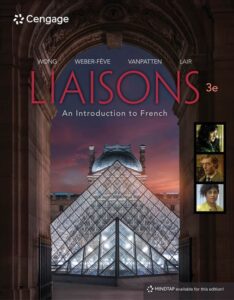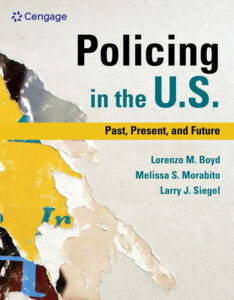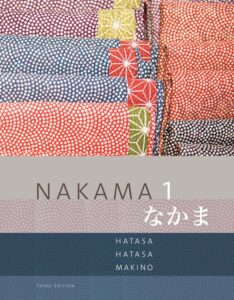As reviewed in Part I of this series on learning design at Cengage, there are four core principles that direct the pedagogical design of our programs to ensure we create quality projects with a focus on the student: inclusivity, intentionality, personalization, authenticity. As Learning Designers, we use multiple methods to assure that these principles drive quality in our content, including content review, instructional design theory and research. Learning happens best when students engage with the material, and quality content helps them do so. By relying on both learning science and market research to inform our program design, we promote quality in our products so more students can learn, and learn better, and so more teachers can teach, and teach better.
Content review and design processes
One of the basic models we use is ADDIE – Analyze, Design, Develop, Implement and Evaluate – to create an iterative content creation process. For example, our Learning Designers analyze existing content through a detailed quality rubric. This review evaluates all major components of a program, including the core text, online content, instructor supplements, learning objectives and assessments, to determine how well the program meets Cengage quality standards, which are based on industry best practices in learning design and learning science. Key components include accessibility and inclusivity, content accuracy and currency, among other elements. Learning Designers also consult usage data and conduct pre-revision market research to determine market-specific areas of improvement for the upcoming edition. This helps us to create programs that are designed for you, and with you, because you know best what you and your students need to be successful.
Based on the findings from this process, we propose a learning design plan and, working with internal and external stakeholders, we revise and refine it until it is detailed, feasible, and meets Cengage guidelines and market needs. Learning Designers then consult with Subject Matter Experts and authors throughout the development and implementation processes to ensure that content meets our revision plan and reflects our desired quality. When the next revision cycle comes – whether it’s a year later for annual titles or potentially much later for others – we evaluate our now-updated content and the iterative process begins again.
Pedagogical theories
Learning design at Cengage is grounded in pedagogical theory to make sure we create current and effective learning materials for our students. Some pedagogical approaches are discipline-specific. For example, our World Languages products support Communicative Language Teaching (CLT) by providing activities that encourage students to speak and communicate meaning using the target language they are studying. Rubio/Cannon’s “Juntos”, an introductory Spanish program, takes this a step further by emphasizing real-life application through project-based work.

In addition to discipline-specific approaches, we also employ broader pedagogical theories across disciplines, such as backward design. In this approach, we begin by defining the targeted learning objectives, then create assessments and narrative to fulfill them. This process creates intentional and effective programs that meet student and instructor needs. For example, in creating the first edition of “Anatomy and Physiology,” the author Dr. Co and content team used the standardized objectives from the Human Anatomy and Physiology Society, added a few of their own, and built the course and narrative content around them. Likewise, “Revenue Cycle for Healthcare,” 1e by Linda J. Parks is a first edition program that began with identified learning and market needs, which we then expanded into learning objectives. The author and content team then created the associated content and assessments in a student-focused process from start to finish.
Another example of a broad framework that applies to learning design throughout all Cengage materials is Universal Design for Learning (UDL). By designing content and assessments that supports students at the margins, we provide support that benefits all students and instructors. We believe that everyone deserves a seat at the teaching and learning table, and UDL is one framework through which we promote equity and accessibility. An example of this is in the multiple means of presentation and engagement that are present in our introductory French program “Liaisons.” Here, grammar explanations are written in the core narrative, presented in context in the feature-length film “Liaisons” that accompanies the program, and explained in video tutorials in MindTap. Students are provided ample practice opportunities to apply grammar in context through various scaffolded activity types, progressing from guided input to open-ended output. This variety of presentation and practice supports engagement, representation and student expression for all learners.

Further considerations
In addition to grounding our learning design in research, analytics, and pedagogical theory, Cengage Learning Designers also consider program-specific factors. These include the learning environment (which changed drastically during and after the Covid-19 pandemic, for example); learner and instructor profiles to account for their needs and challenges; and discipline- and program-specific needs and trends.
Our “Administrative Medical Assisting” program addresses the student need for hands-on experience through custom-made Medical Office Simulation Software (MOSS) Simulations. Designed to be as realistic as possible, these training simulations are a program that introduces students to the type of work they will be completing daily. Students can practice their skills in a safe environment and can make use of the supplementary learning features to learn how to advance through the task.
Similarly, “Dental Assisting: A Comprehensive Approach” contains simulation and dental tray activities to familiarize learners with the tools and procedures they will have to perform on the job daily.
In Criminal Justice, learners and instructors emphasized the need for more real-world assessments that develop critical thinking skills. The “Listen and React” activity embedded at the end of each chapter in MindTap, challenges students to listen to an immersive and authentic audio clip and then write a response, building those key critical thinking and writing skills that are so important for students in their future careers. The activity is currently available in our newest MindTap for “Policing in the U.S.,” 1e and MindTap for “An Introduction to Policing,” 10e.


Instructor needs are also an important factor in learning design. For a consistent and reliable experience, we create a core suite of supplements for each program. In addition, we often create additional supplements that respond to program and discipline needs. For example, all introductory French and Spanish courses have communication activities in which students have a simulive conversation (a combination of simulated and live interaction) by watching a video and recording their own answers to the characters’ questions. This activity allows learners to begin speaking and interacting with native speakers in a low-stakes environment. The introductory and intermediate Japanese courses “Nakama 1” and “Nakama 2” have additional practice activities and situation cards for conversation exercises as well as tutorial videos on difficult grammar concepts and select kanji, providing more input and practice options to address difficult course content. And, in the art history program “Gardner’s Art Through the Ages,” we provide Google Earth coordinates for each image along with instructions for using Google Earth in an Art History course to bring the current context of each work of art to life.


Through collaboration, content review, market research and pedagogical theories, Learning Designers at Cengage ensure that our four core learning principles are represented in every program. The result of this is inclusive, accessible and quality content with creative solutions that center on the student experience – better teaching and learning, by design.
Written by Jarmila Sawicka, Learning Designer at Cengage with contributions by Mara Vuillaume, Learning Designer at Cengage.
Discover our series on learning design at Cengage
While this article dives into the approaches of learning design at Cengage, part 1 of this series focuses on the quality: “Defining Quality Learning at Cengage.” Plus, stay tuned for part 3, discussing the differences between learning design and learning science.

